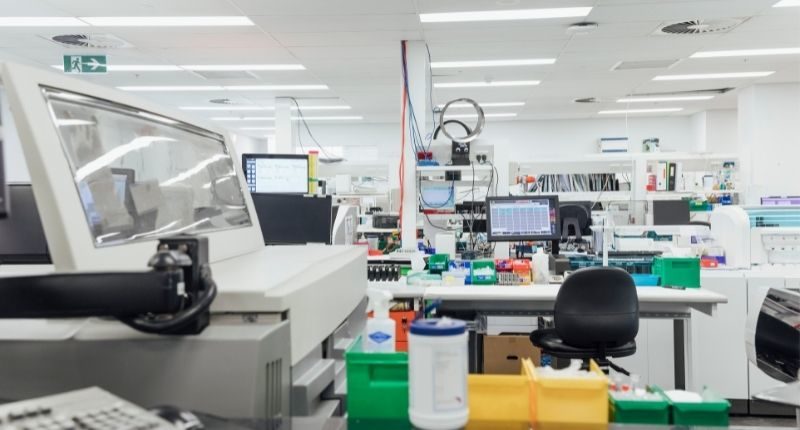
- Commercialisation has increased investment in life sciences
- An investors financial and social objectives can be met through such investments
- Government investment in this sector expected to grow
Investment in life sciences properties continues to grow with various superannuation funds and offshore capital focusing on this market, a report from Colliers and Harrison Street has revealed.
Commercialisation has led to further investment in life sciences over the past five years, bolstering its capital growth potential, says a new Colliers report.
The sector also allows an investor’s financial and social objectives to be met, diversification of investment portfolios and provides insulation from macroeconomic fluctuations.
“The life sciences industry is clearly entering a significant stage of growth, accelerated by a renewed focus on health and biotechnology as a result of the COVID-19 pandemic and as such record levels of capital raising have occurred over the last 2 years,” said Joanne Henderson, Colliers’ National Director of Research.
“We expect that both the Federal and local governments will continue to invest further in the health and life sciences sector, in addition to an increase in private investment and PPP’s.”
Joanne Henderson, Colliers National Director of Research
Growth projections across healthcare and life sciences is attracting venture capitalists and institutional and commercial real estate investors, thanks to the sector’s strong fundamentals which offer secure, reliable and long-term income.
As an index, the listed health sector on the ASX has outperformed many sectors. From November 2010 to June 2022, the ASX 300 Healthcare sector grew by 319%, outperforming IT and other sectors such as metals, mining and financial.
Real estate plays an important role of the health and life sciences ecosystem as real estate participants can leverage from the location of assets.
Industry revenue is expected to grow at 3% annually over the five years through to 2026-27, to $10.3 billion.
In the wake of the pandemic, industry operators continue to benefit from the local manufacturing of essential medical supplies, including vaccines.
“Due to the specialised requirements needed for both the location – such as being close to hospitals, health institutes and universities – and the type of building required for a life sciences operator including laboratories, R&D space and specialised storage requirements, new purpose-built developments will in many cases be the only option and therefore provide opportunities for real estate investors and developers to capitalise on the growth outlook for this industry, whether through direct development opportunities or fund-through development transactions,” Ms Henderson added.
“Also, the clustering effect on the success of health and life science companies has been proven and as such, opportunities will exist for owners of potential development sites within close proximity to existing and planned health hubs surrounding major hospitals and universities.”
Australia already has several Biomedical/Life Science hubs, such as Melbourne Biomedical Precinct, MedTech Knowledge Hub in NSW, Adelaide BioMed City and South Australian Health and Medical Research Institute (SAHMRI) and UNSW Health Translation Hub (Randwick).
“Whilst the potential investment universe is large, the requirements for capital can be significant especially when linked to either the initial stages of the life sciences lifecycle, or alternatively at the mature end of the spectrum,” Mr Sanders said.
“Additionally, if the investments are made at the initial end of the spectrum, there is a significant risk that needs to be carried from an investment lens, until such time as either returns can be achieved commensurate with risk or the risk profile is reduced due to progression through life cycle.”
Superannuation drives growth
Colliers found that the increased weight of capital targeting the local life science property sector had been primarily driven by superannuation funds.
“Superannuation money tends to be ‘patient’ or long-term capital, with many superfund managers looking for long-term stable returns for their members or clients,” Mr Sanders said.
“The life science real estate sector is a prime target for Superannuation funds investing either directly or indirectly through Australian Real Estate Investment Trusts (A-REITS).
“Like many alternative real estate asset classes, many life science companies look to lock in longer lease terms, given the more specialised nature of the space they occupy. Therefore, life science real estate offers a lower risk asset offering a long-term cash flow with reduced levels of rental downtime.
“Life science real estate also provides a more balanced portfolio through a more secure revenue stream in comparison to a portfolio which is highly skewed to more traditional asset classes, and are deemed more defensive through economic downturns and therefore viewed as a counterbalance for portfolios.”
Mr Sanders concluded by noting that the rise in demand for long WALE assets had been apparent since the pandemic began two and half years ago.
“Many investors have been looking to assets that provide a more secure cash flow and lower risk beyond the short and medium-term uncertainty,” Mr Sanders said. “This has resulted in a strengthening of the buyer pool for assets with a long lease term and has created an asset class of its own for long WALE assets.
“Investor interest in long WALE assets is not a new trend, however the current uncertainty has increased focus and therefore competition for these assets. Yields have been driven downwards as a result.
“As this is a very specific profile of asset there is limited stock that meets this profile, this has created a separate office asset class of Long WALE assets, which is agnostic to location or grade as long as it meets this specific profile.
“The life sciences real estate sector is in a unique position to capitalise on this demand and due to the limited nature of completed stock, may spark investments in new development activity and potentially also fund-through sales.”







